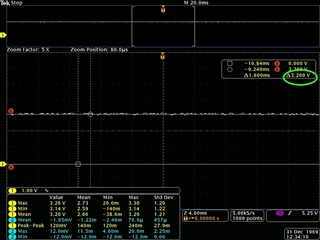Other Parts Discussed in Thread: TPS62162-Q1,
Dear Sir,
We are using TPS62160QDSGRQ1 buck converter in our design to genertae 3.3V. As per our calculation, feedback resistors are R1=470K & R2=150K. But the output voltage generated is 3.19V only. We have checked the Vfb , which is 0.755V only. I have attached the schematics also. Input voltage provided is 12V.
Regards
Ebin




